fbq('trackCustom', 'view_shop_coffee'); var trackEvent = 'shop_coffee'; All hail the mighty coffee bean! This humble little…
Ever get overwhelmed by the sheer variety of coffee beans available?
The range of brands, origins, roasts, and grinds can be confusing.
But how to make the right choice?
We don’t want you to drink bad coffee! We compiled this list to help you narrow down the best coffee beans specifically for you. But more importantly, we’re giving you information. Armed with knowledge, you can determine coffee truth from propaganda.
Here’s to a better cup of Joe!

Is it possible to objectively decide what are the best coffee beans in the world?
Certainly, we can agree on what bad coffee is. Inferior beans, mass roasting techniques, and long shelf life can all lead to terrible coffee.
When deciding which is the best coffee, obviously, personal taste is a factor.
In this section, we’ll break down some of these characteristics to help you define what you love in coffee.
Much of the aroma and taste of coffee comes from the volatile compounds and solubles in the beans. From the moment the coffee beans are roasted, they start losing these compounds through oxidation. After a few months, the coffee will taste flat and stale. Old beans are guaranteed to produce bad coffee.
How do you know it’s fresh? Look for a roast date.
Artisan roasters will put the date the beans were roasted so that you know exactly how long they’ve been sitting around. If you want to keep your coffee fresh, be sure to store your coffee correctly. Moisture, light, heat, and air will destroy your coffee’s taste. Keep beans in an air-tight container away from light and heat.

When it comes to the taste in your cup, you’ll want to brew your coffee as soon after grinding as possible. That means buying whole bean coffee instead of pre-ground.
Ground coffee loses flavor in a matter of minutes and hours. That’s because the oxidation process speeds up dramatically when the bean is cracked open. Even grinding coffee the night before means you are losing flavor.
Important: We highly recommend buying whole bean coffee and grinding it fresh every time you brew. A high-quality burr coffee grinder is an essential tool to get a consistent, even grind. Additionally, most burr grinders allow you to finely tune your grind size.

We often use the words taste and flavor interchangeably, but they are not the same. Strictly speaking, taste is the sensation detected on the tongue. These are salty, sweet, sour (acidity), bitter, and savory. For coffee, sweet, sour, and bitter are the three primary tastes we talk about.
Important: The flavor is a much more complex process. Aroma, temperature, and mouthfeel along with taste all affect the coffee’s flavor. Variety, origin, growing conditions, and processing methods all affect the inherent taste and flavor of the coffee bean.
If you like naturally sweet coffee, look for ones that list fruity and floral flavor notes. African coffees, in general, are known for their sweetness.
You’ll also want to look for lighter roasts as the cooking process burns off the sugars. Typica, Bourbon, and Gesha varieties are all known for their sweetness. Honey processed beans are also usually sweeter.
Here, we’re talking about the taste and not the pH. This kind of coffee dances on your tongue. It might be described as tangy, winy, or citrusy. The acidy taste in coffee tends to develop at higher elevations, so look for coffee grown above 5,000 feet above sea level. Coffees that undergo the fully-washed process also tend to be brighter
Coffee billed as low acid usually has a lower pH than your average cup. Naturally processed coffee tends to have lower acidity. You’ll also want to look for coffee grown at lower elevations, such as the Pacific Islands. These often have flavor notes such as nuts or chocolate. Darker roasts are also naturally lower in acid.
Earthy coffee triggers the savory senses, and this flavor is especially noticeable in wet-hulled coffee from Sumatra. Some like this characteristic, and others don’t.
Some like the slightly bitter taste of dark roast coffee. This bitterness blends especially well with milk. Overly bitter coffee, however, is a result of over-extraction.
Central and South America coffee is known for its balanced acidity and full body. It’s not bright, but it’s not bitter, either. You’ll often get a more balanced cup with blends.

You probably know that the brewing method can dramatically change the overall flavor of your coffee. Some coffees shine as pour overs while others do best as an espresso. Here we’ll explain what types of coffee do best with particular brewing methods.
 French Press
French PressThe French press allows you to experience the full range of a coffee’s flavor. You start with coarse ground coffee. The longer extraction time and lack of paper filter put more coffee compounds and fines in your cup. To circumvent bitterness, avoid the darkest roasts, and be sure to not let it steep for more than four to five minutes. Medium and light roasts do well with this brew method.
 Pour Over
Pour OverThe pour over method allows the true qualities of the coffee beans to shine forth. Traditionally, light roast single-origin coffees were always the recommendation. This brewing method works well for coffees with a complex flavor profile, which is preserved in light to medium roasts.
However, the best roast for this method is a purely personal choice. Whether you love a dark roast Sumatran, a bright and fruity light roast Ethiopian, or a medium roast Central and South American blend, this method can give you a satisfying cup.
 AeroPress
AeroPressAeroPress is one of the most versatile brewing methods. It can make everything from a concentrated espresso shot to a cold brew (when you use the inverted brew method).
If you’re new to AeroPress, you may want to choose a roast lighter than what you usually drink. That’s because AeroPress does tend to make a strong brew. In general, balanced coffee, typical with Central and South American coffees, is best.
 Cold Brew Coffee
Cold Brew CoffeeMedium and dark roasts are best for the cold brew method. The acidic and fruity notes light roast are prized for are simply not extracted without heat being applied. Even if you avoid dark roasts because of the bitterness, you might enjoy a dark roast cold brew. The brewing method itself delivers a sweeter, less bitter, and less acidic cup.
 Drip Coffee Maker
Drip Coffee MakerA balanced medium roast is your best bet for an automatic drip coffee maker. This method does not extract the finer points of a light roast and is prone to over-extractions, which would make a dark roast even more bitter.
 Espresso Machine
Espresso MachineIf you add steamed milk to your shot of espresso, then you’ll likely want dark roast coffee beans. The deeper flavor stands up well in a latte or cappuccino. However, medium roasts can also make a fine espresso. You can check our guide to espresso beans.
If you brew espresso, you might want to wait a week or two after the roast date before you brew.

The world of coffee is so vast. It almost seems unknowable. The good news is there’s a perfect coffee for nearly everyone. Here are some categories of coffee that are perfectly suited for niche markets.
 Low Acid Coffee
Low Acid CoffeeDo you suffer from GERD or other digestive disorders? Have you given up coffee because of its effect on your stomach? Well, you may be able to renew your love affair with this mighty bean. Coffee processed to be gentler on the stomach is steadily gaining a foothold in the specialty coffee market. Our guide to low acid coffee can help you find a bag to get your caffeine buzz back on.
 Decaf Coffee
Decaf CoffeeDecaf coffee is not what it used to be. When it comes to fine coffee, some of us drink it just for the taste. These days, discerning roasters select the finest beans and use advanced decaffeinating techniques to produce a fine brew with little to no caffeine. Check out our guide to decaf coffee to find a coffee to relax with.
Additionally, read our in-house review of Savorista Coffee, they specialize in coffee with low caffeine.
 Hyper-Caffeinated Coffee
Hyper-Caffeinated CoffeeDoes nothing short of a nuclear blast get you going in the morning? Then you might want to try a coffee with a supercharge of caffeine. Our review of the strongest coffee brands can help you find a brew to make your hair stand on end. Also, might want to look into our Death Wish Coffee review.
 Instant Coffee
Instant Coffee“Instant coffee” used to be a bad word among coffee connoisseurs. Instant coffee manufacturers would choose low-quality beans, so the “coffee” tasted terrible. Freeze-dried coffee made with specialty beans can be just as satisfying as fresh brewed. Our guide to instant coffee will lead you to some fantastic brands that will change your whole perception of this category.
Also if you really like speed and convenience Nespresso Vertuo Pods might be worth looking into.
 Flavored Coffee
Flavored CoffeeSome prefer the unadulterated taste of coffee. Others like to bring more interest to their palates. Flavored coffee is one way to bring sweetness to your brew without adding calories. Hazelnut coffee is a popular flavor, and our guide to the best hazelnut coffees offers you a few brands to try.
 CBD Coffee
CBD CoffeeCBD coffee is one of the newer trends in specialty coffee. It can help calm the jitters that sometimes come with too much coffee. CBD might offer other health benefits, including pain relief and anti-inflammatory properties. Our post on CBD coffee explains what it is, and how it works and suggests some brands to try.

We’re so used to buying everything at the touch of a button. Does that apply to coffee? Yes, but it may not always be the best choice. Here, we’ll look at the best place to buy coffee and where to not
The best way to get freshly roasted coffee beans is directly from the roaster. Look around the area where you live to see what coffee shops roast their own coffee. Many cafes roast their own beans or buy from local roasting companies, so their coffee is always fresh.
Another benefit of buying from a local shop is that you can often try the coffee before you commit to a pound of it. You can also talk to the baristas to find out the characteristics of the coffees they sell. This is a great way to narrow down what coffee you want to try first.
You can also find freshly roasted coffee beans online. You’ll find a larger variety of beans to choose from. Higher-end online coffee companies roast to order, then immediately seal and send the coffee to your door. Because they roast to order, you might have to wait a few extra days to a week to receive your coffee beans, but it’s worth the wait.
Look for a company that puts the roast date on the bag. That way, you know exactly how old your coffee is.

A coffee subscription service is a great way to ensure you never run out of freshly roasted coffee. With some, you designate what coffee you want and how often. Our review of coffee subscription services can guide you to a plan that works for you.
If you want to experience a world of coffee, try a service like Atlas Coffee Club. Each month, they choose different coffee beans from one of the best coffee-growing regions and ship them to your door. In the box, you also get information about that region’s culture and the coffee’s characteristics on beautiful postcards.
One way to guarantee that your coffee will taste bad is to use old beans. You should take care as to where you buy your coffee beans. You have no idea how long they’ve been sitting around when you buy beans at places like the grocery store.
Don’t be fooled by “use by” or “best by” dates you see some places. These tell you nothing about the coffee’s freshness and may give a false sense of security.
You may want to also be wary of mass online retailers like Amazon. They might store the coffee in warehouses before shipping it out. Carefully read the reviews to see if the coffee they deliver is fresh. When in doubt, buy directly from the roaster.

There are almost as many opinions about what the top coffee is as there are coffee drinkers. Here, we’ll break down the characteristics of several brands and their coffees to help you decide what coffee to try next.
![LifeBoost Coffee Medium Roast [Organic] LifeBoost Coffee Medium Roast [Organic]](https://coffeehow.co/wp-content/uploads/2021/04/product-image-18.jpg)
$
Check PriceStarting our list are LifeBoost's Medium Roast coffee beans. This company started with the idea of bringing the healthiest coffee beans possible to the consumer.
Dr. Charles Livingston, the founder of LifeBoost Coffee, was particularly concerned with mold. He understood that processing of coffee beans at all stages, from tree to cup, has an impact on mold and other toxins in the green coffee bean. LifeBoost uses independent labs to certify that its coffee is free of pesticides, heavy metals, mycotoxins, and mold.
LifeBoost coffee is also low acid. They claim that even people who had to give up coffee due to stomach issues reported no ill effects on their belly. So, if you've had to limit or give up your coffee intake, it may be worth it to give LifeBoost coffee a try.
All of the beans for Lifeboost's coffee beans are grown at elevation. The coffee is single-origin from Nicaragua. After hand-picking the coffee cherries, the workers wash and sun-dry the coffee beans. Then the coffee beans have a 30-day rest period which allows the flavor to develop.
We know you care about the environment, and Lifeboost does too. It takes steps to care for the planet and its people. Its coffee is always fairly traded, and the farmers use sustainable growing practices.
Lifeboost Coffee also takes steps to take care of the planet and the people on it. Its coffee is always fairly traded and they ensure that the farmers use sustainable growing practices.
This company offers one of the best coffee beans in a range of roasts and flavors. Our top pick is their medium roast. It offers the rich, bold flavor the region is known for. This full-bodied brew has an earthy touch. The aroma has caramel and woody notes. With all their coffee, you only get 100% specialty-grade arabica beans.
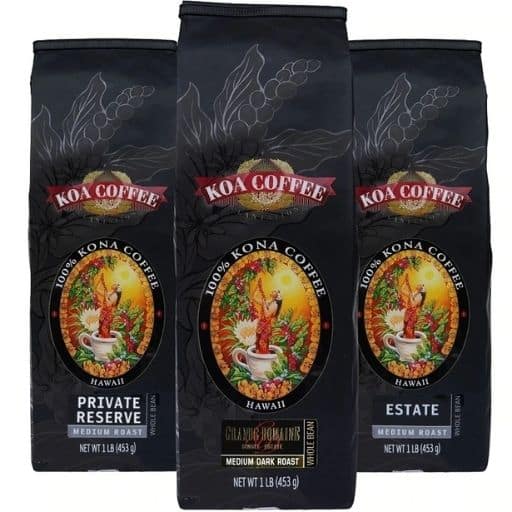
$
Check PriceKoa Coffee was founded in 1997 and has won many awards since then. All of the coffee beans for Koa Coffee are hand-picked and carefully processed and roasted. To assure the quality of every bag, they cup each batch of roasted beans.
By definition, Kona Coffee comes from the slopes of the Hualalai and Mauna Loa volcanos on the Big Island of Hawaii. The coffee is known for its smooth taste and enticing aroma. Many consider Kona to be the finest coffee available. The flavor profile for Kona coffee is light and fruity. You might detect notes of spice or nuts.
All of Koa's coffee is 100% Hawaiian coffee beans. But they're not all Kona coffees. Remember, to be called Kona coffee, it must come from a very specific region near the town of Kailua-Kona. This brand also offers coffee from the Islands of Oahu and Ka'u.
If you've only had a Kona blend, you have not truly experienced Kona coffee. Many blends have as little as 10% Kona coffee beans. The rest come from who-knows-where. When it comes to Kona, Koa Coffee only offers 100% Kona coffees.
The cream of the crop offering from Koa Coffee is the Peaberry 100% Kona coffee. The peaberry is a natural mutation where the coffee cherry grows a single, oval seed. Coffee cherries usually have two seeds facing each other. The peaberry is said to pack even more flavor than your typical coffee bean. This coffee brews into a full-bodied cup that is incredibly smooth.
You can get their 100% Kona Peaberry in a medium or dark roast coffee beans. The medium roast coffee beans will preserve more of the unique flavor Kona coffee is known for. You could also choose Koa Coffee's Grand Domaine 100% Kona coffee with a light roast or any of their other Kona and Hawaiian coffees. If you're not sure, this company also offers two- and three-packs. That way, you can try several varieties before deciding on your favorite.
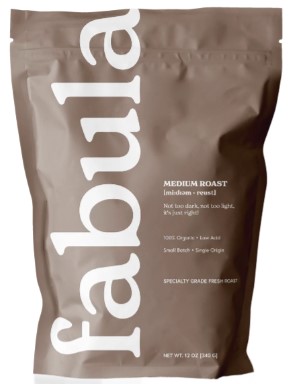
$
Check PriceFabula is a relatively new coffee roaster in Miami focused on delivering clean, healthy coffee. Similar to Lifeboost, many choose Fabula for its gentleness to the stomach. Here is a more detailed Fabula Coffee Review
Coffee from Fabula is primarily single-origin coffee from Mexico, Peru, or Colombia. Try their Coffee of the Month program if you're looking for more exotic coffee. Each month, they will send you coffee from exotic locations around the world, such as Twende in the Democratic Republic of Congo (DRC). It's a great way to try coffee you might never have heard of.
Whether you prefer light, medium, dark, or espresso roast, Fabula has a coffee for you. This company packages and ships the coffee fresh from the roaster so it arrives at its peak of flavor. We always recommend buying whole beans, but you can also get Fabula coffee pre-ground or as K-cups. You can also get decaf or flavored coffee.
Try the Peruvian coffee with Caturra and Cattuai varietals for a smooth, rich, full-bodied brew. Flavor notes include chocolate and molasses. The coffee has a clean, sweet aftertaste.
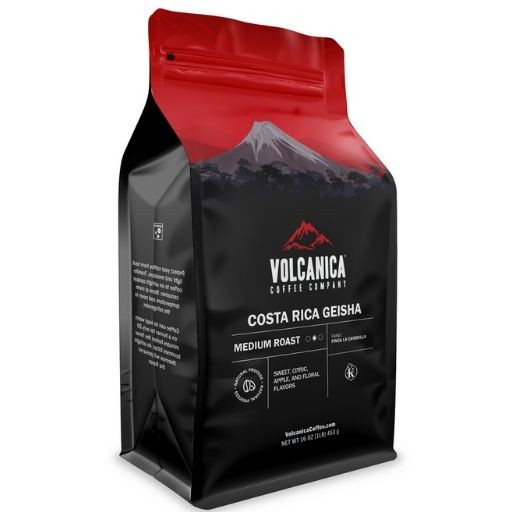
$
Check PriceThe founders of Volcanica Coffee were originally from Costa Rica. Generations of their family had helped harvest coffee cherries high in the mountains. The inspiration to start the company came from the founders' frequent trips back to Costa Rica. There, they experienced a rich and flavorful cup of coffee that they couldn't find in the US.
As a company, Volcanica is dedicated to giving. All their coffee beans are sustainably sourced. This family-owned business works directly with the coffee growers and cooperatives to assure the money goes to the people who are doing the work. It also donates 1% of its sales to charity: water.
Besides being an ethical company, their coffee beans are renowned for their quality. Geisha coffee is an ancient variety that hails from Ethiopia, the motherland of all coffees. But this coffee is grown in Costa Rica The name of the varietal comes from the town of Gesha in Ethiopia. It contains 30% less caffeine than typical coffee. When grown in Costa Rica, it has a sweet taste with notes of apple and floral flavors.
These single-origin coffee beans are harvested in micro-lots. The coffee cherries are naturally processed. That means the cherries are sun-dried, sorted, and raked by hand. This allows a sweeter, more floral profile in the cup.
The delicate taste of this Geisha coffee is accompanied by an aroma of flowering grass, lavender, and cocoa with hints of molasses and pipe tobacco. In the cup, it has an almost tea-like body. It is Kosher certified. We always recommend buying whole bean coffee, but this variety is also available in several different grind sizes. Volcanica offers one of the best coffee beans available on the market.
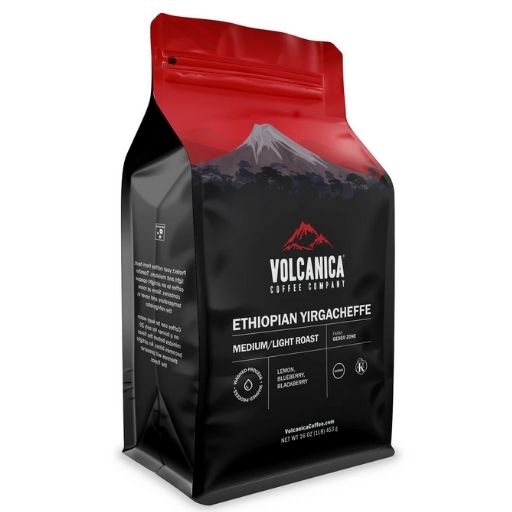
$
Check PriceWe already talked about the good things Volcanica does, so we'll get right to this unique coffee beans. The Ethiopian Yirgacheffe is a fair trade coffee and Kosher certified and organically grown. Ethiopian coffee is considered to be one of the best coffee beans countries with lots of flavors.
These Ethiopian coffee beans bring a truly exotic taste to your home. The Yirgacheffe region produces traditional arabica coffee beans that are descended from wild coffee trees. The brew has distinctively fruity and floral tones. Tasting notes include lemon, blueberry, and blackberry. The medium-light roast retains these delicate flavors.
These single-origin coffee beans followed the wash process and were then patio dried. It's on the lower end of the acid scale with a pH level of 5.1. This medium-bodied coffee is unique and pleasing. You can purchase it as whole coffee beans or in a variety of grinds.

$
Check PriceYou get much more than just great coffee when you subscribe to Atlas.
It's a whole cultural and educational experience. Each box includes a beautiful postcard with information about the country of origin as well as tasting notes and suggested brewing methods for each coffee. Regardless of the origin, you will always receive 100% arabica beans of the highest quality.
Atlas is great for people who love trying new things. Previous offerings included Costa Rica- Tarrazu, Costa Rica – Palmares, Ethiopia – Sidamo, and Indonesia - Sumatra. Because Atlas chooses a new coffee each month, they always get beans harvested at the peak of perfection. It is the ideal gift for any coffee lover.
You can tailor your subscription to suit your needs, and you can change your preferences whenever you want. We strongly recommend choosing whole bean coffee, but you can also have it pre-ground in a variety of grind sizes from cold brew through espresso. Atlas also delivers coffee pods. For your subscription, you can indicate if you prefer light to medium roast or medium to dark roast. They also offer a cold-brew subscription featuring coffee that shines with this brewing method. The cold-brew subscription includes filter bags for mess-free brewing.

$
Check PriceHere's another fine offering from Volcanica Coffee Company. Like Hawaii, Kenya grades its coffee by size. The largest is graded AA. That is followed by A and B. Grade AA is the most sought after and packs the most flavor.
The National Kenyan Coffee Board works closely with coffee farmers to ensure the highest quality of beans. The coffee is sold weekly at auction. This serves to reward farmers for higher-quality beans.
Kenyan coffee is known for its bright acidity and winy aftertaste. The bold taste is never bitter. The coffee beans are grown on the high plateau surrounding the extinct volcano Mount Kenya. The region has rich volcanic soil. At an elevation between 4900 and 6800 feet, the region is perfect for arabica coffee cultivation.
This offering from Volcanica is Rainforest Alliance Certified. Volcanica adheres to fair trade coffee policies to ensure that workers and producers are paid well for their work. This coffee is also Kosher Certified and is on our best coffee beans list.
These Kenya AA coffee beans are washed processed and sun-dried. A single-origin coffee, it hails from Nyeri Hill Estate and is shade-grown.
Flavor notes include raspberry, cranberry, fresh-cut redwood, and alyssum-like flowers. A medium-light roast preserves the flavors of this region. As with most of Volcanica's coffee, Kenya AA is available as the whole bean or in a variety of grind sizes. You can also get this coffee in decaf.
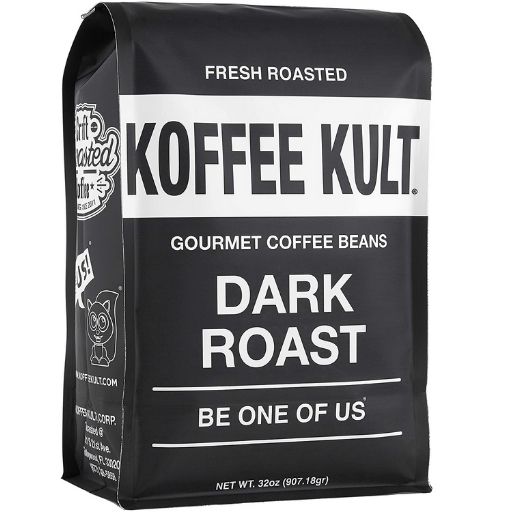
$
Check PriceKoffee Kult is a little company with a big personality.
The founder started roasting for himself in 2010. Soon, friends and family demanded fresh-roasted coffee beans. Before long, the hobby grew into a business selling locally in Hollywood, FL. By 2013, Koffee Kult started selling online to a rapidly growing clientele.
As a company, Koffee Kult demands not only high-quality coffee beans but also fair treatment for the growers and workers. Representatives regularly visit the coffee farms. They ensure that the growing practices are sustainable for the planet and the people. They make sure that women are paid directly and equally. They don't allow their growers to use child labor. In fact, they support schools on the farms for the kids.
Koffee Kult imports beans from over 50 countries in Indonesia, Central and South America, and Africa. This dark roast is a blend of beans from Colombia, Guatemala, Brazil, and Sumatra. It is roasted to the second crack for a full flavor. Koffee Kult uses this blend in their own cafes for espresso.
The beans in this dark roast are 100% specialty arabica beans. Cupping notes include a smooth, heavy body with cinnamon notes. It is a bright brew with a long finish. Other flavor notes include caramel and chocolate. Koffee Kult only sells their coffee in the whole beans.

$
Check PriceThe focus at Stone Street Coffee is to deliver expertly roasted coffee beans. Stone Street coffee is based in Brooklyn, NY. The buyers take care to select the best coffee beans from around the world.
This company deals with blends as well as single-origin coffees. They also offer a variety of flavored coffee beans. Many of their coffees carry Organic, Rainforest Alliance, Fair Trade, and Kosher certifications. To make your life easier, they also have K-Cup pods.
Our pick for this list is Stone Street Coffee's Cold Brew. This South American blend is dark roasted coffee beans to deliver full flavor in a cold brew. It is Kosher certified.
It comes in whole bean or coarse ground specifically for cold brewing. Cold brewing delivers a smooth, exceptionally low-acid coffee. Because no heat is applied to the coffee bean, this method virtually eliminates any bitterness. It also gives a sweeter cup.
You don't need any fancy equipment to make cold brew at home. A jar with a lid and a strainer will get it done. For ultimate convenience, you can get Stone Street Cold Brew in pitcher packs. No need for a strainer.
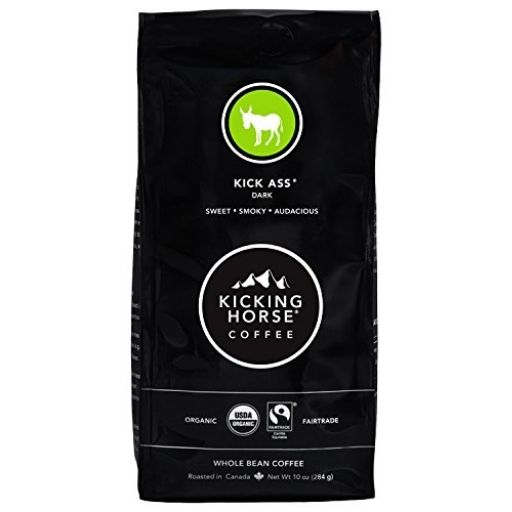
$
Check PriceThe founders of Kicking Horse Coffee have been roasting coffee beans for 25 years. They roast their beans high in the Canadian Rockies. All of Kicking Horse's coffee is 100% certified Organic and Fair Trade Coffee Beans compliant (arabica only).
This signature blend from kicking horse coffee includes beans from Indonesia & South America. The package identifies these coffee beans as sweet, smoky, and audacious. That's right. Audacious. That gives you a sense of the company culture.
The aroma of this very dark roast coffee carries traces of sweet vanilla and dark chocolate. Flavor notes include chocolate malt, molasses, and licorice. You'll enjoy an earthy lingering finish.
It's a great get-up-and-go coffee recommended for a variety of brewing methods. It might perform best in a French Press. Because it is very dark roast coffee, the oily surface may not do as well as an espresso. You can find it as whole bean coffee or pre-ground bean coffee. Kicking Horse Coffee has a well-deserved place in the best coffee beans list.

Coffee is a persnickety little plant. It doesn’t like to be too hot or too cold. It needs a lot of rain, but not too much. It only likes certain soils, and it must have good drainage.
As a result, there are defined regions where coffee grows. Here, we’ll go over these regions and the characteristics of coffee that grows there.
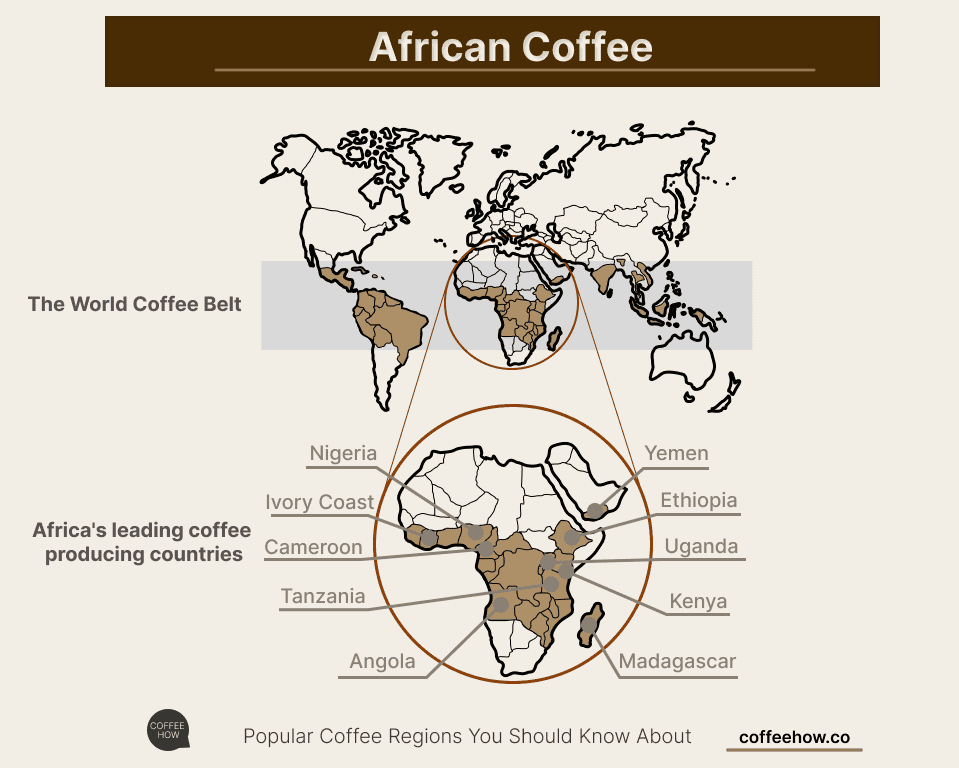
Coffee from Africa usually has a bright acidity with floral and fruity notes. Ethiopia, Kenya, and Rwanda are the three main specialty coffee-producing countries. You’ll also find Tanzania coffee, usually a peaberry. While Uganda is in the list of top 10 coffee producing countries, they primarily grow robusta beans. Here, we’re more concerned with arabica beans used for specialty coffee.
Ethiopia is considered to be the origin of all coffee that we drink today. The genetic diversity of Ethiopian coffee beans is vast, and you’ll often find distinct differences between the sub-regions there. Known for complex, fruity flavor, you’ll usually find Ethiopian coffee in lighter roasts. It tends to have a light to medium body.
The coffee industry in Kenya is highly regulated. The country has its own coffee rating system, with AA being the most sought-after. Like neighboring Ethiopia, it also is known for bright acidity and sweet fruitiness. It tends to have a fuller body than Ethiopian.
Like other African coffees, these beans are sweet and bright. This coffee is usually a little more tart and citrusy. The body is often described as smooth and silky.

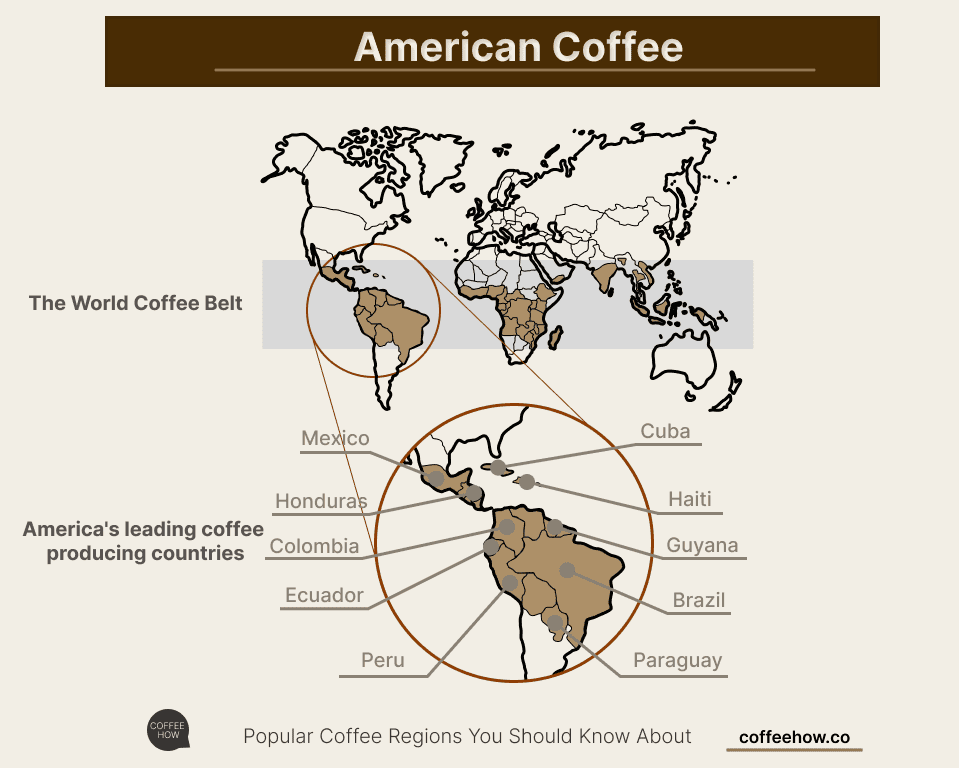
The mountainous regions in Mexico, Central America, and tropical South American countries are ideal for growing coffee. In general, these coffees have medium to low acidity. They are often well-balanced and medium-bodied.
At least 16 Latin American countries produce coffee. We’ll only cover a few of them. The top-producing countries are:
Brazil is the world’s largest coffee producer. Previously known for commercial production, recent years have seen a shift towards advancing technology to compete in the specialty coffee market. Brazilian coffee tends to excel in dark roasts and resists bitterness. Flavors tend toward chocolatey and nutty with rich medium to full bodies.
The most iconic figure in the world of coffee is trademarked by the Colombian Coffee Federation. It is the fictional Juan Valdez with his trusty donkey, Conchita. Colombia is the third top producer of coffee in the world. Coffee from this country is usually mild and balanced with a medium body.
Coffee from Costa Rica is gaining a reputation among specialty coffee enthusiasts. It shares characteristics of African coffee with its clean, sweet flavors and light body.
While not actually on the North American continent, we would be remiss to not mention Hawaiian coffee. Kona coffee is grown in a specific sub-region of the Big Island. 100% pure Kona coffee is rich and smooth with light fruity flavors.

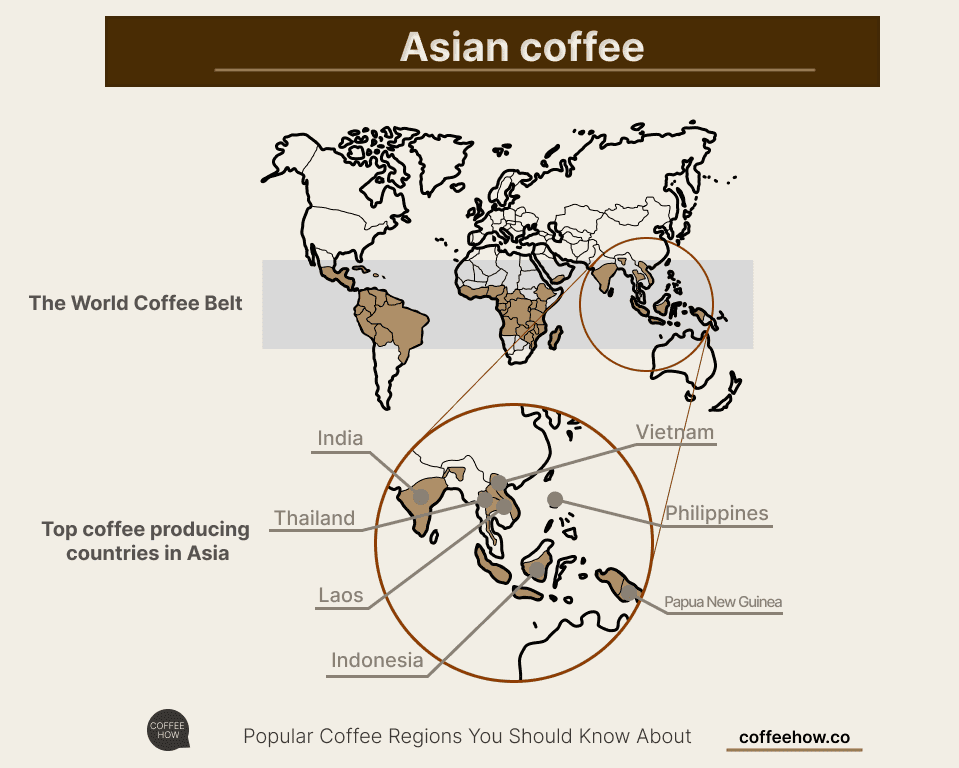
The qualities of Asian coffees are opposite to those of African coffees. In general, they have low acidity and a heavy body. India, Indonesia, and Papua New Guinea all produce specialty coffee.
Coffee from India features the full body Asian coffees are known for. They have low to mid acidity, and often have notes of spice such as cardamon and clove.
Indonesia ranks fourth among the world’s top coffee-producing countries. These coffees are often wet-hulled, giving them an earthy tone with deep chocolate notes. Sumatra and Java are two popular areas for coffee. These beans are often dark roasted.
Coffee in Papua New Guinea is grown high in the mountainous regions. Coffee from this region tends to have a cleaner, sweeter taste than other Asian coffees. The body is not as heavy as a typical Indonesian.
Our overall top pick for the best coffee brand goes to LifeBoost coffee. They closely monitor each step of the way between tree to cup. Their coffee is certified organic and they fresh roast and deliver coffee as quickly as possible. The medium roast yields a rich and satisfying cup for any occasion.
While some people drink coffee just for the effect, we believe it should be savored and enjoyed. We hope this helps you weed out the hype and select a coffee that will be relished. There’s a whole world of coffee waiting for you to explore.
We recommend buying directly from the roaster. A local roaster is best, but that dramatically limits your options. That’s where the internet comes in. Many upper-end roasters only roast to order. That means they always ship coffee right after roasting.
When exposed to air, the flavor and aroma of coffee deteriorate quickly. To balance freshness and convenience, you might want to buy enough coffee to last six to eight weeks. If beans are kept longer than that, you’ll notice the flat taste.
Contrary to popular belief, you don’t want the darkest roast possible for espresso. The darker the roast, the oilier the coffee. These oils can clog the espresso machine. We recommend a medium or medium-dark roast. You don’t necessarily have to get an espresso blend. While roasters choose beans for their espresso blend specifically for how they perform for espresso, there are many medium roast coffee beans that make a great shot.
It’s more about grind size than the type of bean when it comes to cold brew. Many single-origin coffees do well in a cold brew. Some brands offer a blend particularly suited to this brew process. You’ll want to stick with a medium or darker roast. Without the heat, a very light roast may not extract enough flavor.
You should always store coffee in an airtight container protected from light and heat. Please, don’t store it in the freezer or refrigerator. You don’t want your coffee with a hint of onion. Also, the extra moisture can kill the coffee’s taste.
The moment coffee is roasted, it starts to lose flavor. A roast date, as opposed to a “use by” or “best by” date, lets you know exactly how old the coffee is. The best coffee brand will put the roast date on each bag. That means they care that you receive the freshest coffee possible.
A bit Unorthodox, but it is worth mentioning mushroom coffee. It has less caffeine than regular and many other health benefits.